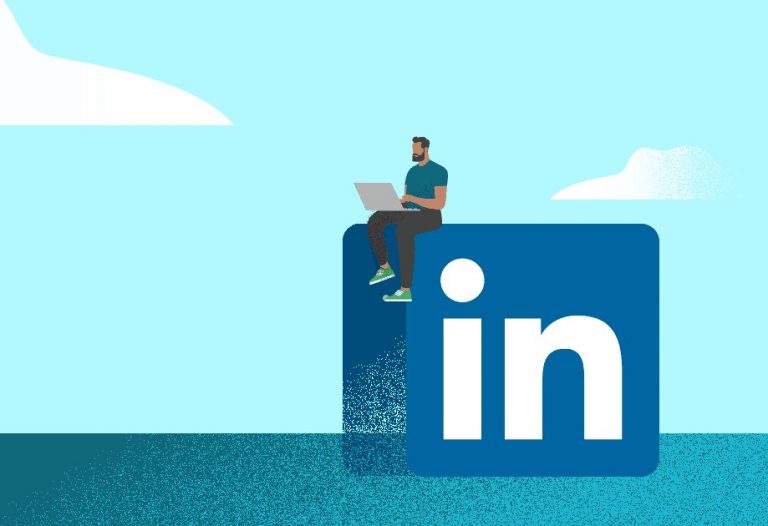Facebook Ads: The Fundamental Guide
The Pros and Cons of Facebook Ads
Facebook Ads are among the original paid digital marketing tactics. This article explores the pros and cons of integrating Facebook ads into your lead generation strategy, as was as a tactical implementation plan if you choose to use Facebook ads.
The Pros of Facebook Ads:
- User base. As of the beginning of 2020, Facebook is home to 2.6 billion monthly active users, making it the largest social media platform in the world. That number alone is a compelling reason to explore the original “social network”.
- Cost per lead (CPL). Like all advertising platforms, the level of spend is entirely up to your discretion. However, in terms of CPL, Facebook remains the best bang for your buck. The average cost per lead on Facebook coming into 2020 was $1.72.
- Available audiences. Being home to 2.6 billion users means that Facebook has the largest potential prospect base of any advertising platform in the world.
- Effectiveness. Although effectiveness (based on conversion rates and CPL) has diminished somewhat over recent years, the fact of the matter is simple: Facebook ads are still effective. In fact, 67 percent of social advertisers deem Facebook to be the most effective ad platform.
- Targeting and retargeting. Get into the nitty-gritty by targeting people based on age, gender, location, job title, industry, marital status, and interests. Retargeting allows you to serve ads against users who may have visited your website, used your mobile app, or provided their email address. Then, use lookalike audiences to expand your marketing efforts based on users similar to your current audience.
- Ease of use. Facebook Ads Manager is the original social ad platform, meaning that it has some of the most advanced options available to advertisers, but it is also one of the easiest for new users to navigate.
- Robust analytics and tracking. Unparalleled is a word that could be used to describe the depth and breadth of reporting capabilities baked into Facebook Ads Manager.
- Viral potential. Let’s face it, no one is going to share your Google Ad with a friend, but if you have a hilarious ad (Manscaped ads come to mind for me), then you might reach new audiences at no extra cost.
The Cons of Facebook ads:
- Limited enterprise effectiveness. If your target audience is predominantly companies with 100+ employees, then Facebook isn’t going to be the optimal platform for you. If this is your target demographic, then you better explore Facebook’s big brother (LinkedIn).
- Loss of platform preference. Years of overexposure to ads, data breaches, and public scrutiny have undoubtedly weakened “The Social Network”. As millennials and Gen X cling to Snapchat, Instagram, and Tik Tok, ad effectiveness has certainly declined.
- (Potential) metric misreports. Over the years, there have been claims that Facebook has inflated numbers on video play metrics, app referrals, and repeat visitors. However, Facebook claims to have fixed these errors.
How to launch a Facebook ad campaign
1. It all starts with your unique selling proposition (USP)
The first step in any ad campaign is to isolate your unique selling proposition(s). For some companies, the USP is obvious and may already be established. For example, Unbounce is a B2B company that has both a simple and great USP: convert more. Landing pages are their game, and the result they drive is simple.

Source: Unbounce
However, for other companies, USPs can become much more complicated to determine. If you are one of those companies, there is a general process that can help you isolate your USP(s).
- Create a list of competitors and competing offerings
- Use this list to identify your unique attributes and differentiating qualities
- Hone in on customer benefit qualities, not product qualities
- Shape those qualities into a customer promise
- Work and rework until you’ve identified ideal keywords
- Cut it down, USPs should be short and impactful
- Test and adjust until you’re driving optimal conversions
Our offering is a little more complicated than landing pages, but the proposition to marketing and advertising agencies is still rather simple: grow your business from point solutions to a comprehensive marketing offering.
2. Identify your audience
The easiest way to find your audience is by digging into the advanced audience mining capabilities that are baked right into Facebook’s Audience Insights.

Source: Facebook Audience Insights
Here’s how it works:
- Use Audience Insights to analyze the people that are already following your page as well as people that follow other pages, have specific interests, fall within various demographics/psychographics, and more. These variables allow you to fine-tune your targeting and create audience lists based on your needs.
- Create and save these audiences within Audience Insights.
- When creating your next ad in Ads Manager, these audiences will be available for you to choose from.
3. Set up tracking with Tag Manager and Ads Manager
Before you launch any campaigns, you will need to add your Facebook pixel to Google Tag Manager.
Here’s are the steps you need to follow:
- Log into Google Tag Manager
- Navigate to your website’s container and click “Add a new tag”
- Choose “Customer HTML Tag” and add a name for your tag
- Navigate to “Events Manager” on Facebook and select “Add Event”
- Select “Install code manually”
- Select “Copy Code” to copy the entire base code
- Return to Tag Manager and paste the entire code into the HTML container
- Click the “Advanced Settings” dropdown and select “Once per page” under “Tag firing options”
- Under “Fire On,” select “All Pages”
- Create the tag
If you need further assistance, find out more here.
4. Identify your CTAs and conversion goals
What action are you enticing? Are you expecting prospects to fill out a Facebook lead form? Are you redirecting them to a landing page? A page on your site? A blog perhaps? What is the next step in the buyer’s journey?
CTAs are not a science, and you may want to experiment with a variety of the aforementioned CTAs (as well as others) to identify the best performers. The key is to make sure that your CTA aligns with your ad messaging so that it doesn’t create a disjointed user experience.
Once you’ve decided where you want your ad traffic to go, then you’ll need to set conversion goals in Ads Manager.
Here are your objective options in Facebook Ads Manager:

Source: Facebook
Based on your offering and the stage of the buyer’s journey that you are aiming to impact, there are a variety of options available. That being said, if you have a fairly complex product/service offering, “Lead generation” will almost always be the best objective to fill your inbound sales funnel.
5. Create eye-catching visuals/videos
It’s time to talk about audio-video (AV) and design. Competition on Facebook is fierce, and if you don’t have world-class graphics and video content to pair with your ads, then you aren’t going to earn your share of audience attention.
Here are some tips for visuals on Facebook Ads:
- Use text in your graphic if your CTA is conversion focussed (ex. A guide download).
- Text free visuals can be impactful if your CTA is educational (ex. A blog link).
- Use real people in your graphic if it aligns with your copy.
- Location-specific visuals can drive greater engagement if you have the bandwidth.
- Think about standout visuals, not necessarily standout colors. It’s true that certain colors (ex. Red) will demand attention from your audience, but if you want to convert viewers, the secret sauce is in showing them something that doesn’t look like every other ad in their newsfeed.
Here are some tips for videos on Facebook Ads:
- Keep them short. Fifteen seconds or less is a good benchmark if you want to get full-length views from prospects.
- Add captions so that your video makes sense without audio as most users have autoplay audio turned off.
- Use real people and real product screenshots as much as possible. Vector-based video is becoming a thing of the past.
These are a few general best practices, but the reality is that the only way you will find out for sure what exactly works best for your business is by testing extensively.
6. Create ad variants
One of the greatest digital advertising mistakes you can make is not creating ad variants. By creating variants, you can test different copy, different images, different CTA text, etc. This allows marketers to identify top performers and turn off variants that aren’t up to spec.
When launching a new campaign, it’s best practice to create four ad variants. This allows you to split test two different graphics with two different text pairings at any given time.
Here’s an example from AdEspresso:

Source: AdEspresso
7. Monitor and optimize your campaign
When running Facebook ads, your work is never done. Optimization is arguably the most important part of the entire process.
Here are some best practices for Facebook ad optimization:
- Continually introduce challenger ads. Once you’ve honed in on your best variant in a given campaign, turn off the bottom performers and create new ads to replace them. The best practice is to use elements from your top performer in each new variant (ex. Graphic in one, text in another, CTA in another). This is important because these challengers might grow to outperform the original top variant.
- Experiment with new audiences. If you have a top performer, try running that ad against a new audience.
- Ramp up the budget on top-performing ads and reduce the budget on low performers. Allocating budget to testing is important, but don’t burn ad spend on campaigns that aren’t converting.
- Experiment with different value propositions and CTAs. For example, if you are aiming to drive conversion, try one variant with a demo form CTA and one with a sign-up CTA.







